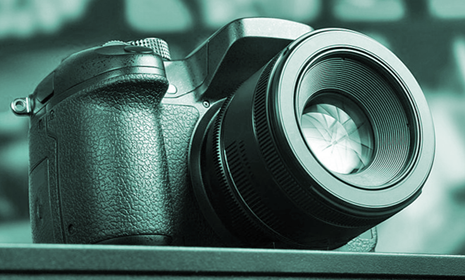Online Tutorials
"Photography is the only language that can be understood anywhere in the world." - Bruno Barbey
Photography is part technics and part art. To have better art you will need to master some technicks. Digital Photography is a bit more than just using a digital camera and it is often not as complicated as you might think it is.

Basic Tips and Rules:
 If you have the manual for your camera now would be a good time to read through it.
If you have the manual for your camera now would be a good time to read through it.
 Be sure to charge battery before using your camera. To prolong the battery and its life, do not charge it for longer than 24 hours continuously.
Be sure to charge battery before using your camera. To prolong the battery and its life, do not charge it for longer than 24 hours continuously.
 Make sure you have enough storage space on your digital camera to take plenty of photos.
Make sure you have enough storage space on your digital camera to take plenty of photos.
 Whenever possible use tripod and (if your camera allows it) use a release cable or remote controller to reduce camera shake.
Whenever possible use tripod and (if your camera allows it) use a release cable or remote controller to reduce camera shake.
 When you are not using the camera, remove and store the battery. Always cover the terminals with tape or other insulators before you store or discard your battery, because contacting other metal materials in you storage or waste container may lead to fire or explosions. Also if the battery is left inside camera, damage caused by leakage may occur.
When you are not using the camera, remove and store the battery. Always cover the terminals with tape or other insulators before you store or discard your battery, because contacting other metal materials in you storage or waste container may lead to fire or explosions. Also if the battery is left inside camera, damage caused by leakage may occur.
 Take as many pictures as you'd like, and later decide which represent your subject in its best light. Since you're taking the photos, you can decide which are good enough to be displayed, and which are going to be left out.
Take as many pictures as you'd like, and later decide which represent your subject in its best light. Since you're taking the photos, you can decide which are good enough to be displayed, and which are going to be left out.
REMEMBER: Only show people the good stuff - Don't show bad stuff to anybody.
Correct Light
Most digital images will look good if they where correctly lighted. A correctly exposed image means that the right amount of light has exposed the image sensor. Lighting issues are the number one consideration and obstacle to good professional looking interior shots.
When taking photographs of the interior, make sure that all lights are turned on inside the room you are shooting. Try to position your self in a location that best views the ultimate features of each room. Decide what you would like to see if you are just observer. You don't want your shots to be of blank and boring walls!
Always try to back yourself into a corner or towards the entry of each room to best capture the full spectrum of the architecture. If you have a wide angle attachment, we recommend using it. Make sure you are zoomed out all the way to maximize the size of your photo.
Avoid shooting directly at mirrors. Try to either stand next to or away from the mirror if you don't want a shot of the photographer!
When taking photographs of the exterior of the subject, try to arrive at the location on a clear, sunny day. Gray skies dull the reflection of exterior walls and landscapes leaving a subdued and unimpressive shot.
The Larger the Aperture, the Better Your Digital Camera Will Perform in Low-Light Situations
The aperture defines the size of the opening in the lens, which in advanced cameras can be adjusted to control the amount of light reaching the film or digital sensor (CCD or CMOS). In combination with variation of the shutter speed, this will regulate the photograph's degree of exposure to light. Typically, a fast shutter speed will require a larger aperture to ensure a sufficient exposure to light, just as a slow shutter speed will typically require a smaller aperture to prevent excessive exposure to light. A larger max. aperture also allows you to use a faster shutter speed to freeze action. Aperture is usually measured in f-numbers.
Helpful Links:
 How to Correctly Expose an Image
How to Correctly Expose an Image